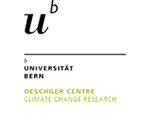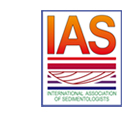Session OSM 13

Image Credit: Stijn De Schepper
Past Warm Periods Informing the Anthropocene
Convenors
Stijn De Schepper, Bjørg Risebrobakken, Bette Otto-Bliesner, Stéphanie Desprat.
Description
Global climate predictions indicate that by the end of this century global temperature will have risen to levels unprecedented during instrumental times. Studies of past warm periods throughout Earth's history are key to understand Earth system dynamics and the natural variability of the climate system in a globally warmer world. For this session, we solicit data and model contributions investigating ocean, land, atmosphere and cryosphere interactions during past warm climates. We welcome contributions from each past warm period that can provide insights into the present and future state of Earth's climate.
Talks and Posters
Talks
Wednesday, 13 February 11:45 - 12:30
Chair: Stijn De Schepper
11:45 - 12:00
About the difficulty to find a Pleistocene analogue to the Holocene and Anthropocene
André Berger, Qiuzhen Yin, Nicholas Herold
12:00 - 12:15
Pliocene Marine Isotope Stage (MIS) M2: caused by a hiccup in the closure of the Panamanian Gateway
Jeroen Groeneveld, Stijn De Schepper, B. David A. Naafs, Martin J. Head, Jan Hennissen, Cederic Van Renterghem, Stephen Louwye
12:15 - 12:30
The relative roles of CO2, palaeogeography and vegetation in determining late Miocene climate: results from a terrestrial model-data comparison
Catherine Bradshaw, Daniel Lunt, Rachel Flecker, Ulrich Salzmann, Matthew Pound, Alan Haywood, Jussi Eronen
Posters
Display: Wednesday, 13 February and Thursday, 14 February
Author attendance: Wednesday 16:00 - 18:00
Chair: Stijn De Schepper
A comparative study of large scale atmospheric circulation in the context of future scenario (RCP4.5) and past warm climate (mid-Pliocene)
Yong Sun, Gilles Ramstein, Camille Contoux, Tianjun Zhou
Can variations in orbital and greenhouse gas forcing explain the North Atlantic sea-surface temperature evolution during the Last Interglacial?
Petra M. Langebroek, Kerim H. Nisancioglu
Characterizing conditions of the Nordic Seas water column through the Pliocene
Bjørg Risebrobakken, Carin Andersson, Erin McClymont, Lisbeth Jensen
Evaluation of the ratio of natural and anthropogenic forcing in the regression of the Aral sea during the Medieval Warm Period
Renato Sala, Jean-Marc Deom
How to glaciate the Northern Hemisphere in a globally warm world?
Stijn De Schepper, Jeroen Groeneveld, B. David A. Naafs, Cédéric Van Renterghem, Jan Hennissen, Martin J. Head, Stephen Louwye
Interglacial vegetation dynamics revealed from land-cover estimates and potential disturbance factors
Petr Kuneš, Piotr Kolaczek
Investigating the Uncertainty in the HadCM3 Model using a Perturbed Physics Ensemble in a Warmer World Palaeoclimatic Setting
James Pope, Matthew Collins, Alan Haywood, Harry Dowsett, Daniel Lunt
Modeled variability of land vegetation and carbon during the Holocene
Tim Brücher, Victor Brovkin, Veronika Gayler
Modelling the influence of evolving vegetation on past greenhouse climates
Claire Loptson, Dan Lunt
Multiple drivers of long-term hypoxia in the Baltic Sea: A pilot biomarker study
Lovisa Zillén, James Bendle, Christopher Gallacher
New insights into the Holocene Thermal Maximum: feedback and triggering mechanisms
Francesco Muschitiello, Dan Hammarlund, Barbara Wohlfarth
Refined pCO2 reconstruction in Pliocene warmth
Osamu Seki
Surface ocean conditions in the eastern Nordic Seas during the Pliocene
Carin Andersson, Bjørg Risebrobakken, Erin McClymont, Lisbeth Jensen
The Miocene Mi-events: new paleobiological and paleotemperature data from Porcupine Basin, SW Ireland
Stephen Louwye, Willemijn Quaijtaal, Stefan Schouten, Timme Donders
Understanding the range of climates that can be simulated by perturbing uncertain climate parameters within their range of uncertainty for the early Eocene warm paleoclimate
Navjit Sagoo, Paul Valdes, Rachel Flecker















